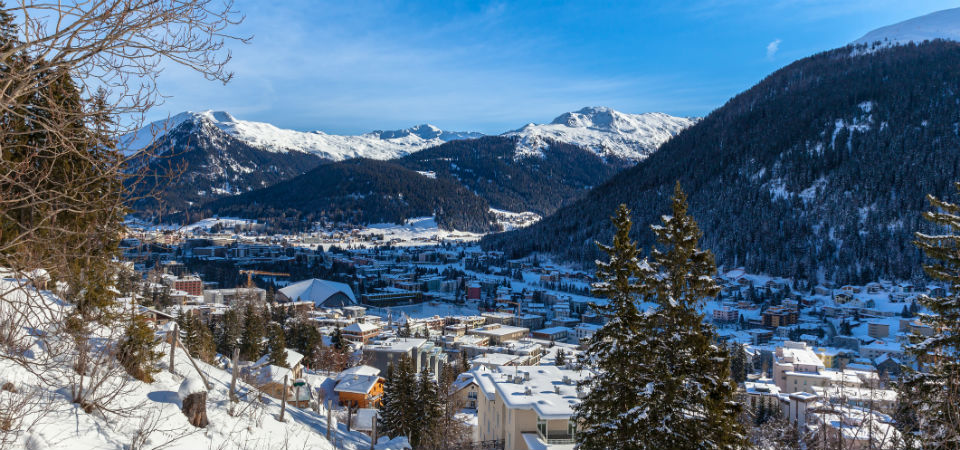EXPERT COMMENT: France’s President Emanuel Macron caused amusement at the World Economic Forum (WEF) Annual Meeting 2018 in the winter resort of Davos, Switzerland, by declaring “when you arrive here and see the snow, it could be hard to believe in global warming… obviously, you [didn’t] invite anyone sceptical about global warming this year.”
Mild jibes aside, Macron and the object of his humour, US President Donald Trump, appear to be forging a close relationship, despite the latter’s decision to withdraw the US from the 2016 Paris Climate Accord, a United Nations Framework Convention on Climate Change agreement with 195 national signatories, to reduce and mitigate carbon emissions, such that global warming is limited to 2ºC above pre-industrial levels by the end of the current century.
The burgeoning alliance of the urbane Macron and the mercurial Trump holds out the prospect for some sort of unlikely climate rapprochement, but what did the WEF itself have to say about the environment?
It’s worth noting that in its Global Risks Report 20183 that the WEF regards environmental risks as paramount.
Three of the five most likely and most impactful risks are described as environmental in the report: extreme weather events, natural disasters, and the failure of climate change mitigation and adaptation.
However, the latter risk is already being viewed through a pessimistic lens: “Unfortunately, too little has been done to mitigate climate change and there is little hope that this will change anytime soon.
Our own analysis shows that the likelihood of missing the Paris Agreements target of limiting global warming to 2ºC or below is greater than the likelihood of achieving it.
This is likely to exacerbate the impact of global environmental risks.”
The context for this view is not one of a hypothetical future world, but of a rapidly-transforming present. There are few, if any, places where this is more vividly-illustrated than the Arctic.
The US National Oceanic and Atmospheric Administration (NOAA) 2017 Arctic Report Card stated starkly that the “Arctic shows no sign of returning to the reliably frozen region of recent past decades.”
This followed the Arctic Council’s Arctic Monitoring and Assessment Programme (AMAP) 2017 report on Snow, Water, Ice and Permafrost in the Arctic (SWIPA), which offered “with each additional year of data, it becomes increasingly clear that the Arctic as we know it is being replaced by a warmer, wetter, and more variable environment.”
Trends in air and sea temperatures are being followed by changes in snow and ice cover7, permafrost thaw, plant and animal distributions on land and in the ocean, water cycle shifts and multiple stresses on indigenous peoples.
The canary in the Arctic coalmine dropped off its perch some time ago, and the 21st-century Arctic will be a fascinating arena for environmental, social, economic and political change, and potentially, conflict.
A key issue for the far North, in relation to the Paris Accord and to the WEF’s view of climate change mitigation as a global risk, is the process known as Arctic amplification.
This refers to a collection of powerful environmental feedbacks which amplify the warming trend, such as the greater absorption of solar radiation as reflective snow and ice surfaces are lost, the decreasing effectiveness of diminishing snow and ice bodies as sinks for heat energy, the insulating effect of spring and autumn cloudiness driven by a warmer, moister atmosphere, and the release of heat from the ocean into the atmosphere as the Arctic Ocean’s frozen lid disappears.
Arctic amplification is highly effective, causing atmospheric warming there to occur two to three times faster than the global average.
So, if the global air temperature increase was stabilised at 2ºC, this implies a much warmer Arctic: the SWIPA report indicates that this scenario corresponds to a winter Arctic Ocean 5–9ºC warmer than the average of the past two to three decades by 2100.
So, what emerged from Davos? If success was measured in calls-to-action, the meeting could only be described as a triumph.
The Indian Prime Minister, Narendra Modi, declared climate change “the greatest threat to civilization” and announced an ambitious renewable energy target.
Macron asserted that he wanted to make France “a model in the fight against climate change” and undertook to close down all his country’s coal-fired power stations by 2021.
But though India has made significant strides in deploying solar power, it remains committed to expanding energy production from coal10, while coal provides only 2% of France’s electricity generation.
Other leaders were less forthcoming. If success was measured in terms of the deep, rapid decarbonisation policies required to meet the 2C target, there was little if any news to dispel the pessimism of the WEF’s own Global Risks Report.
The Arctic is poised to make large contributions to global sea-level rise through the 21st-century, mostly from the Greenland Ice Sheet.
In perspective, some 280 million people currently live in areas expected to be submerged by sea-level rise resulting from a 2ºC global temperature rise; for a 4ºC rise, that figure grows to about 630 million.
This is even before the additional damage caused by exacerbated coastal flooding is taken into account, before the impacts on lowland agriculture are factored in, or the economic losses from uninsurable homes, public infrastructure and businesses are reckoned with.
The lesson must be that business-as-usual for another decade will mean that business-as-usual becomes impossible by the end of the century, or sooner.
All the right ambitions have been expressed during the WEF in Davos: all the right actions must now follow urgently.
Dr Richard Hodgkins is Senior Lecturer in Physical Geography at Loughborough University.
ENDS
